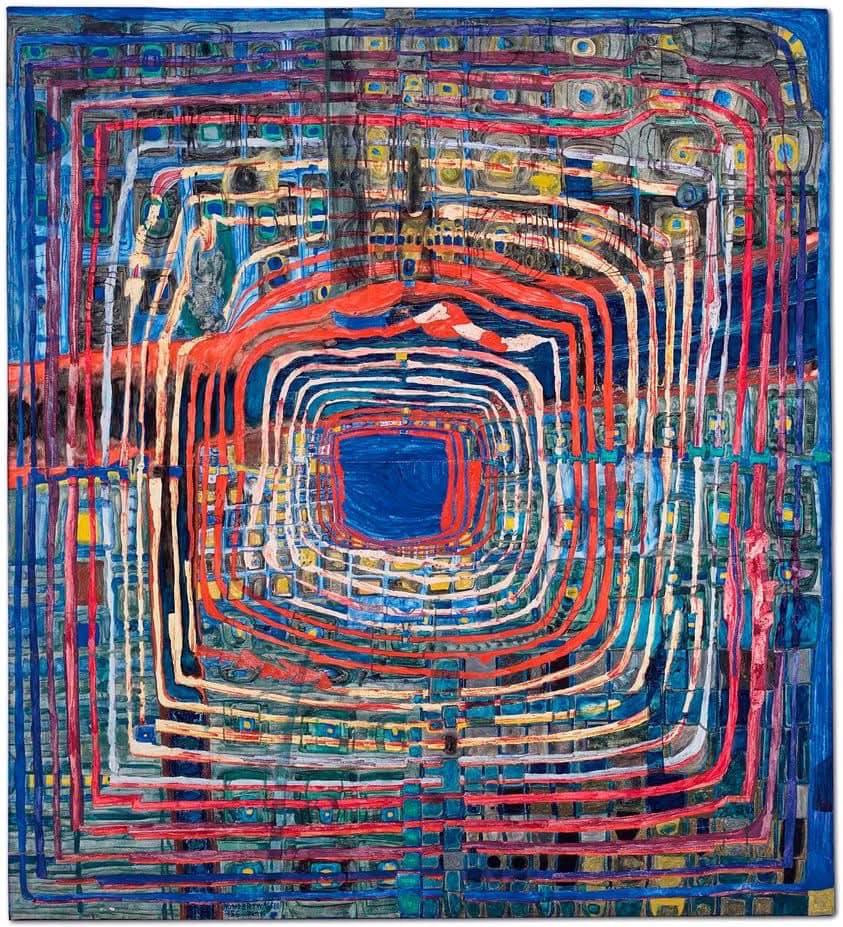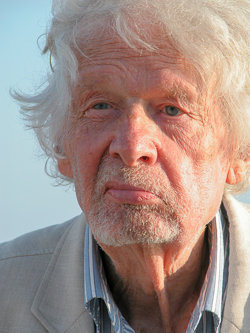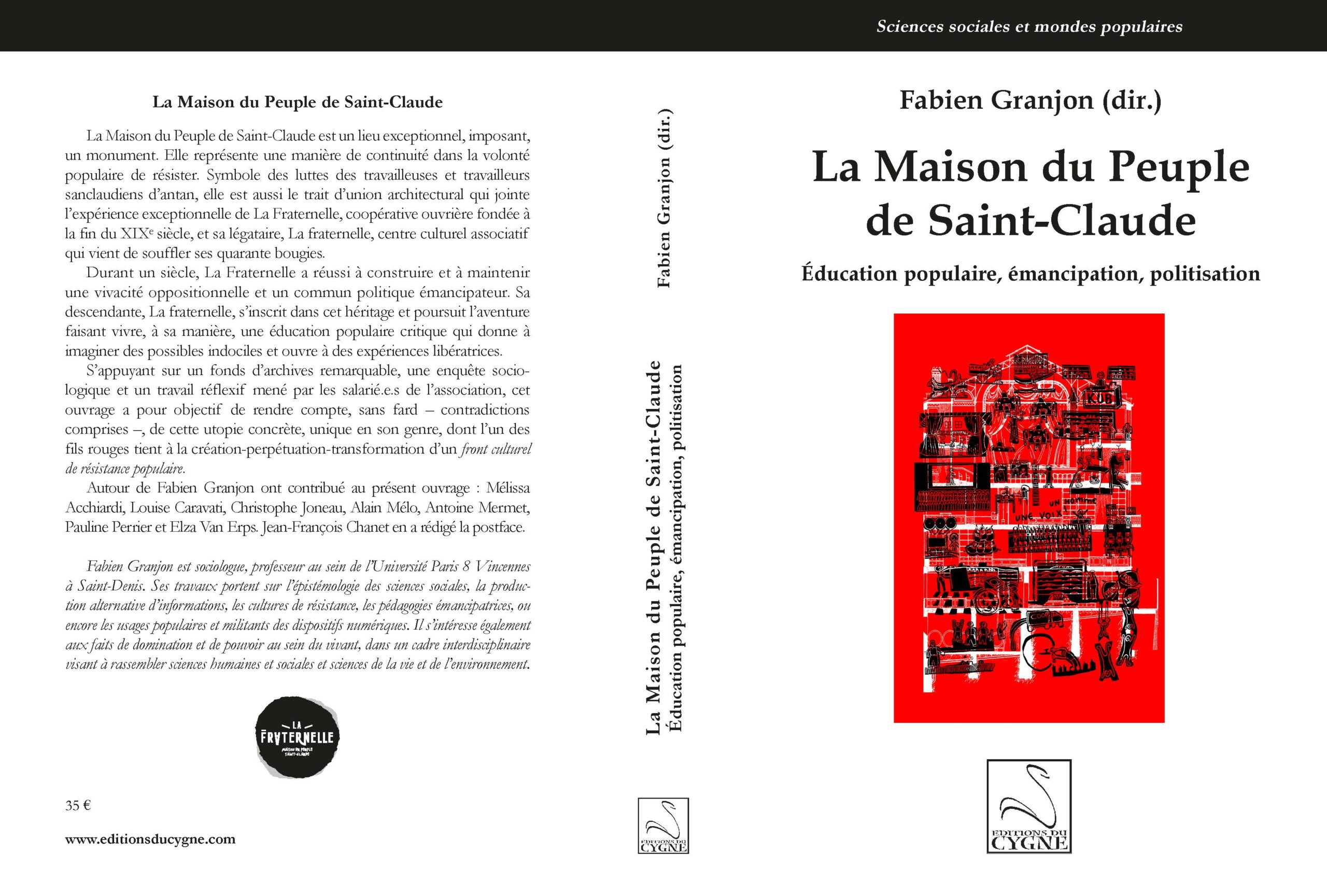Projet de recherche – The Digital Instrumentation of Public Employment Services: France Travail
Public service reforms seek to develop action plans that would allow the state to reduce spending and public debt, to refine apparatuses of work, and improve the working conditions of public servants, all the while delivering high-quality user services. This restructuring of the public action model increasingly relies on digital technology in its administration (Schou, Pors, 2018), also called the “digitalisation of public services” (Mazet, 2019). The development of this “new” governmentality[1], which establishes the digital as its socio-technological heir tasked with “modernising” public policy, is not always a smooth process. For example, the intervention of private operators signals an unprecedented form of privatisation of public service duties (Jeannot, Cottin-Marx, 2022) and reinforces the emergence of an increasingly disembodied “state as a platform” (Bellon, 2022; Alauzen, 2021). For public servants, it fundamentally reshapes some of their professional practices, presents a challenge to these professions, and reconstructs the associated professional identities and cultures (Hall, Taylor, 1997; Dubois, 2021). For user-citizens, the withdrawal of some in-person services (Okbani, 2022), the increasing difficulty of accessing rights (Deville, 2023) and a loss of control over personal data (Bertrand, 2017) redefines their relationship to the state and, more broadly, to civil society (Sztandar-Sztanderska, Zielenska, 2018; Revillard, 2018). Furthermore, the rollout of tools invested with the state’s capacities of action introduces digital technology into the repertoire of practices affected by inequalities, which, in turn, must be addressed through ad hoc social policies (development of “digital inclusion” policies and “public services” expansion of the “digital mediation” sector). It also gives rise to counter-technology protests by unions or groups who are against the implementation of these public policies.
This research project seeks to document and examine the numerous obstacles that public transformation by means of digital technology encounters by exploring, first, the space in which the state produces digital governmentalities (Arsène, Mabi, 2021) and, second, the plurality of the socio-technological logics behind public action[2]. The intersection of these two lines of analysis, which emerge from the same epistemological current (social fields theory and dispositionalist sociology), will allow for a global analysis of the systems that streamline public action through digital technology to be undertaken, and for concrete forms of digital tools, as well as their different modes of appropriation (Chiapello, Gilbert, 2013; Courmont, Le Galès, 2019) to be captured.
To outline this project in further detail, this overview is divided into two parts. First, it presents the entire theoretical framework that will be drawn upon. This framework forms the central element that will construct a coherent understanding of the production of digital governmentalities and displacements that the new institutional systems engender as much for public servants as for citizens. In addition, by aiming to reintroduce the role of tools and apparatuses (Halpern et al., 2019, 2014; Baudot, 2014; Lascoumes, Le Galès, 2004) into social fields theory and dispositionalist sociology, it offers a novel approach. The second part outlines three areas for study linked to the field of public employment services and its digitalisation that I would address during the five-year delegation to the Institut universitaire de France.
- Research Questions and Theoretical Approaches
This project’s central research question is inspired by the work of Pierre Bourdieu and the scholars who continue in his tradition. Within this line of thinking, there are two overlapping forms of the social, referred to as “histoire faite chose” (history in things) and “histoire faite corps” (history in bodies). In other words, there are, on one hand, processes of institutionalisation that shape social spaces (within and outside the field), and, on the other, processes of embodiment that produce frameworks of thought, action, and evaluation amongst others. Both social fields theory and dispositionalist sociology consider social practices as the combination of embodied inclinations whose origins lie in socialising frameworks that exist prior to action (social conditions producing individuals) and particular practical contexts (institutional conditions mobilising dispositions) that call for, allow, suspend, or proscribe, to varying degrees, the implementation of the different dispositions that are adopted by the social subjects taking part in the action. During a period in which it is evident that social conduct is increasingly guided by digital tools (algorithms, big data, AI), I argue that it is also important to take into consideration the technological nature of this social dynamic. Moreover, such an approach would provide the means to consider this dynamic as a complex dialectic game between dispositional supports (embodied frameworks) and conventional supports (incorporated scripts, action plans – Akrich, 1987) giving place to socio-technological pairings (forming “hybrid collectives” – Barbier, Trépos, 2007). When these two types of support are “put in contact”, they “enter into action” to produce convergences of practical, situated accomplishments.
- Social fields theory, public policies and socio-technological apparatuses
Social fields theory provides one way of understanding state action, state power, and, in particular, public policies (Bourdieu, 2012; Bourdieu, Christin, 1990; Dubois, 2014a/b). The state defines a bureaucratic field (Georgakakis, 2020), which is presented as a space of production for public policy. These policies should be seen in the context of the positions and the adoption of those positions by public servants in dialogue with other contributors (competitors and/or allies) from other fields (media, legal, civil society). As Vincent Dubois (2014a) has noted, there are two main ways to understand the construction of public policy. The first is to consider these policies as the result of a combat game between almost rival orientations, which are attached to the positions and interests of those who defend these orientations. The second consists of establishing a connection between a policy and the relational structure (the system of interdependence) of the fields of the agents who take part in its production. Combining these two options to apply the concept of social fields to state actions allows for an analysis of how the spaces that produce public policy function as a field of power (of positions) and of struggle (of adopting positions) that aims to regulate a specific institutional domain (i.e. in the double meaning of a structure responding to the rules of the field — the means — and an ambition to regulate public assets — the end), which is necessarily founded on power relations (state power, public powers) that, in short, oblige, but can also be contested through the ways obligation is exerted.
This theoretical foundation, which space does not permit me to expand on further (Dubois, 2024, 2022), does not appear to sufficiently account for the fact that public policy is implemented through establishing socio-technological apparatuses (Dodier, Barbot, 2016; Silva-Castaneda, 2012; Beuscart, Peerbaye, 2006), which aim to bolster the orientations chosen by the state. The conditions of possibility for implementing public policy stems from the invention of arrangements, rules, norms, procedures, and individuals (auxiliary public servants), but also from the technological instruments that translate public will into scripts and become powerful levers for public organisation. Auxiliary public servants, just like user-citizens, are never directly confronted with public policy, but with the socio-technological apparatuses that form its interface. This way of considering public action through the lens of its instruments invites an understanding of how it functions with respect to the capacity for apparatuses to align the practices of public servants and of user-citizens with state decisions. The power of apparatuses stems from how they render the underlying political choices invisible, so that their instruments convey “values, instilled with an interpretation of the social and the specific concepts of the envisaged mode of regulation” (Lascoumes, Le Galès, 2014: 13). By providing the tools for implementing public policy, apparatuses make this choice more difficult to contest or, at the very least, aim to prevent negotiation and a constant supervision of the institutional order. The process of making state power acceptable passes through ad hoc ideological production, through legitimising processes of producing public policy (e.g. showing consultations with recognised experts, having recourse to social dialogue), and through symbolic efficiency relating to official rules (Bourdieu, Christin, 1990: 65), as well as through establishing its instruments (Lascoumes, Simard, 2011; Salamon, 2002), a number of which are digital tools (platforms, API, algorithms). By acting on the “technological evidence”, administrators and users who are subject to administration are brought together around state prescriptions (Hatchuel, 1995) of which technology, to some extent, becomes the zealous agent.
The state, in concrete terms, governs by mobilising apparatuses (arrangements of discourses, of individuals, and of instruments) that operationalise its objectives and reinforce its regulation systems. An apparatus of public action is “at once, a social and technological apparatus that organises specific social relations between public power, [its agents] and its intended audience according to the representations and significations that it conveys” (Halpern et al., 2019). The socio-technological approach thus returns the material and technological aspects of public policy to their rightful place and considers them as actors in and of themselves and not simply as more or less efficient tools of a techno-solutionism. Digital apparatuses are never neutral as they communicate programmes of institutional action that involve different actors (e.g. public servants, users, trade unionists) in systems of specific public action. The process of digitalising public policies and services therefore cannot be understood as a simple exchange of instruments. Rather, digitalisation undoubtedly leads to a reconfiguration of the (internal and external) practical relationship to public services, whilst also outlining other developments that affect the ends, content, actors, and the relationships that are entered into with public policies.
- The plurality of socio-technological logics behind public action
As a default, analyses of state action through its instruments, as is practiced in certain strands of sociology of public action (Lascoumes, 2018; Lascoumes, Le Galès, 2004), place little attention on the social characteristics of the individuals (public servants and citizens) that make up one of the two elements of socio-technological apparatuses. It is as if rehabilitating the long-overlooked instruments into analyses (the “concern for objects” – Dodier, 1995) contributes to a turn away from the social dimension of those who administer them and are subject to their administration.
Considering “the variety of intermediaries and modes through which each of these objects guides activity” (Dodier, Barbot, 2016: 294), such heterogeneity could not be adequately summarised as a means to describe the manipulations of content, tools, and interfaces without linking them with dispositions. Usages do not depend soley on the scripts inscribed in the body of instruments but also on the frameworks of perception, action, and so on, which are inscribed in the bodies of individuals. These uses are the product of dispositional relationships to the (instrumental) practice that is socially constructed, the result of an adjustment framed by values, beliefs, representations, and an ethos (Granjon, 2022a). Moreover, it is important to acknowledge the possibility of developing apparatuses and instruments of digital public action, as well as becoming aware of the social logics determining the evolution of their usages. Accounting for the intersection of these two forms of the social — setting up dispositions and setting up dispositifs (apparatuses) — within systems of public action inevitably requires being attentive to the “unique folded states of the social”, to the plurality of dispositions and to the contextual conditionality of their implementation (Lahire, 2013; 1998). The contexts in which public policy evolves should be considered as a combination of instruments organised in more or less stable apparatuses (Akrich, 1987), conveying prescriptions-proscriptions of action that only become effective, in one way or another, in the presence of dispositions. Being attentive to dispositions encourages us to pay attention to individual specificity and the way in which the dispositional originality of each individual frames their appropriation of instruments by selecting the proprieties of them (Bourdieu, 1997: 161), by attributing ends to them (Dodier, Barbot, 2016), and by transforming them into uses, non-uses, or misuses. If the dispositions of dispositifs are seized by the holds that are formed in their instruments’ programmes of action, this practical relationship to the practice of “things” also plays out in the opposite direction. It can therefore be considered that it is the different interconnected scripts (instrumentation) that attract certain dispositions and encourage subjects to adopt them and, at the same time, to ratify a model of public action.
The dialectic game between dispositions and dispositifs is presented as an extension of the established correspondence between habitus and (positions in the) field, whose practice theory was founded by Bourdieu. It also represents an expansion of the dispositions/contexts relationship within dispositionalist sociology as developed by Bernard Lahire. I would suggest that the passage from contexts to dispositifs is a gesture almost equivalent to that which invites us to pass from habitus to dispositions. This allows us to understand situations that are both more varied than individual cases stemming from the ontological agreement habitus/field and closer to the reality envisaged by the dispositions/contexts game. In particular, this shift allows for a fuller account of the “generative capacity” (Barbier, Trépos, 2007) of the instruments that tend to produce control (i.e. to develop power grabs), but without definitively determining them due to the interactions with the dispositional supports of individuals. The result of this interaction does not always meet the expectations of state innovators, sometimes far from it.
From a dispositionalist approach that is conscious of the “unique folded states of the social” and of the diversity of unique folded states of the instrumental tools that equip apparatuses, the functional connection of instruments with dispositions is only accomplished by means of sustained work of alignment, but it never completely overlaps: “The exercise of power is not a naked fact, an institutional right, nor is it a structure which holds out or is smashed: it is elaborated, transformed, organized; it endows itself with processes which are more or less adjusted to the situation” (Foucault, 2000: 245). The aim of an apparatus is to penetrate and conform with reality, to produce, maintain, and displace practices, and, at the same time, to create spaces of socialisation producing dispositions in accordance — or at the very least, compatible — with the logics that prevail in its implementation (e.g. in the words of Foucault, by disciplinarisation or control of the adjustments). Yet, the holds that apparatuses exert, by which people are encouraged to seize them (their programmes of action, their rationale), can themselves be subject to conditions and lose legitimacy or effectiveness. Above all, they can be seized in ways of acting, thinking, or evaluating that do not necessarily correspond with the aims of control and standardisation.
For Foucault, the concept of an apparatus outlines a space of problematisation that presents the principle of a power’s rooting in “the whole network of the social” (Foucault, 2000: 345) and its distribution between heterogenous entities, human and non-human. This idea is also found within pragmatic sociology where non-human agents are not always able to impose their direction. They come up against actors’ abilities to carry out critical operations, to become more widespread, and, in the same way, to shift prescriptions through compromises and introducing auxiliary apparatuses. Within this perspective, it is the critical competences of actors and their ability to work together and bring together apparatuses that allow for the transformation of practical conditions. For dispositionalist sociology, which recognises the influence of socialisation structures in the behavioural economics of social subjects, the displacement of social practices stems from a misalignment between the embodied social properties of social subjects (in a practical sense or a situated sense of reflectivity and of struggle) and the objective social properties of contexts. I consider that it is the exchange of dispositions (summaries of past experiences) and the various instruments of dispositifs (i.e. with the conventional supports of social spaces that “remain”, forming totalities and making up “focal points of experience” – Foucault, 2010) that lie at the origin of change. Moreover, it is a case of recognising the existence of social orders and considering their conditions of possibility as relating to the nature of the co-presence and assemblage of heterogenous elements (dispositions/dispositifs). Moreover, to understand state orders, it is necessary to identify the dominant strategic functions and the ends prevailing at their emergence (logics of conception), but also to capture the ways that this heterogeneity coexists and is concretely organised (logics of assemblage), to understand the ways in which it is appropriated (logics of usage) and described at different stages (discursive logics) by those who are under its grip (submitted to its socialising forces) and grappling (in conflict) with it (generating more or less adjusted dispositions – Frega, 2016).
- Areas of study: the field of public employment services
Using this theoretical framework that is attentive to the dispositions of actors and socio-technological apparatuses of public action, I will examine evidence from one particular sector within public policy, which will allow for an understanding of how, on the side of the “innovators”, the space in which the state produces digital governmentalities functions and, on the side of the “operators” (public servants and citizens), the plurality of logics of appropriating this instrumentation.
I will focus on the field of public employment services (PES), which has been the subject of numerous strategic plans in recent years, beginning with the creation of Pôle Emploi in 2008 based on the model of Jobcentres in the UK. The successive reforms of PES have made digital technology a lever which claims to improve the efficiency of the services offered to jobseekers. These reforms consist of, on one hand, making the tasks of public servants easier (a “one size fits all” approach through automatising low value-added tasks: emailing, profiling, processing documents) and removing time dedicated to personalised advice; and on the other, improving access to the national job market by matching profiles and job offers (jobs boards, sourcing candidate profiles, digital parsing to identify and recruit invisible groups). With the France Travail[3] reform (a central pillar of the government’s proposed “objective: full employment” law) whose first pilot linked to the RSA social welfare benefit began at the beginning of 2023 in 18 departments, the entirety of public employment services, along with the governance of Unédic which set the rates for social contributions and employment benefits, will now be organised through one single service[4]. Whilst digital instruments primarily serve as the interface with beneficiaries (front office) and an organisational redeployment of services (back office), they are additionally being deployed to coordinate the different actors within the field of PES. France Travail aims to construct a large network that brings together the State, Pôle emploi, Cap emploi, local projects, place-based collectives, chambers of commerce, and social partners. In particular, the reform plans to connect different actors through the same interoperable platform/hub for data and shared digital services, which will allow for the cross-referencing of files and databases between administrative departments and with the computer systems of private actors in the field. The consequences of introducing new digital apparatuses into PES will engender a major reconfiguration of the field and effect changes in the structures of relations and distribution of the power between its actors. Pôle emploi is thus projected to become the leader of an employment, training, and placement ecosystem that connects different territorial levels of intervention (local, departmental, regional, national).
In this research project, my reference to the concept of a field is, thus, not without reason as it connects to the concept of dispositions and reintegrates “policy style” (Richardson et al., 1982) “[in]to the structure of positions and relationships between agents in competition for its definition, as long as that structure establishes the social space of options envisaged and determines their relative chances of success” (Dubois, 2022: 12).
- A new field for producing public employment policy
Combining the instrumentation of state action and a social fields theory of public action thus aims to address both the state of the relations of structural forces between the different actors within the field producing public employment policies and the strategies of change and innovation (i.e. the choice of instruments by identifying the reasons and processes that led the state to select certain instruments over others — Halpern et al., 2019: 322) that institutions develop prior to their implementation.
The production of digital governmentalities in general and within PES in particular specifically aims to choose industrial operators and technical solutions that allow the state to best implement its public policies. Therefore, I propose to identify new PES partners-innovators, its “efficient agents” (Bourdieu, Christin, 1990), the private competitors to whom jobseeker support is increasingly being entrusted, their objectives, their interests, their active properties, their adoption of positions, their dispositional affinities, and their system of relations. It will thus be necessary to define the new social space of producing public employment policy, its contours, and its divisions, as well as the power relations that run through them and eventually lead to decisions concerning socio-technological apparatuses. I will also outline the action plans for the instruments selected by public powers and the way in which they are organised within larger apparatuses serving the socio-technological structure of France Travail. Finally, I will analyse the new private sector opportunities proposed to user-citizens and their consequences for the equivalent public opportunities.
I will interview staff managing the IT and digital transition at Pôle emploi; staff within local authorities and the governmental department for work (Ministère du Travail, du Plein emploi et de l’Insertion); those submitting private applications; state start-ups; the actors behind the Ensemble innovons pour l’emploi platform [5], the BetaGouv[6]programme, and the Nov’Us[7] community; and individuals designated as “entrepreneurs d’intérêt general” by the interdepartmental management of digital services (DINUM)[8]. Consulting working papers and the accompanying discourses that identify technology as having the capacity to best embody these changes in the interests of the public[9] will allow me to understand the socio-technological imaginaries evoked and the reasoning behind the actions carried out as a result.
- Public servants and citizens
In addition to focusing on the spaces that produce public employment policies, its actors, and their (adoption of) positions in the field, I will also interview “operators” (i.e. public servants and user-citizens) to consider how socio-technological apparatuses of public action are received by those who are tasked with implementing them[10] and those that use them. These two areas are directly linked because the dominance of the actors from the economic field within the bureaucratic field leads to, for example, an increasing mangerialisation of public services (Gervais, 2012) and a reconfiguration of the relationships between the state and the employer and the state and those who redistribute services.
Addressing different agents in the field of public employment services, I plan to identify the shifts that new digital governmentalities introduce in terms of professional skills, statutory positions, professional identities, and how duties are carried out. For example, professional tasks relating to managing access to rights and providing advice are largely redefined (including increased reporting, increased use of professional software, remote working, deskilling) and the foundations of certain professions are shaken since public servants at Pôle emploi, Cap emploi and local projects[11]must reconsider the fundamental elements of their roles from a platform approach. The logics of digitalisation have already led to strike action and demonstrations (see next section) in instances where there are links to redeployment, a reduction in the workforce, job insecurity, and outsourcing to the private sector. It is likely that such opposition will only increase. Overall, I will record the organisational readjustments and practices of PES, alongside their effects on the relationship with the public.
Logically then, this project will also address the practical consequences of digital instrumentation and the evolution in forms of use and appropriation that it generates for the beneficiaries. Jobseekers who encounter the most difficulties (e.g. under-qualification, long-term unemployment) are often those who are the least skilled and competent in the digital world[12], which has repercussions for accessing services and rights (Deville 2023) and requires the support of digital helpers or digital advisors at France Services (Mazet, 2023). As for those who do not have any particular difficulties using digital tools, digital and algorithmic monitoring of modes of registration, tracking job searches (Mon Assistant Personnel), and control over situations (being assigned a “risk score”) all raise issues of discrimination and categorisation, especially in “non-standard” cases (exclusion by design – Noble, 2018 ; Allhutter et al. 2020; Vivès et al., 2023). Moreover, the most competent staff rarely interact directly with the online portals and administrative work is transferred to the user-citizens (Dujarier, 2008). The potentially significant consequences of this reform on the journey of returning to work for the most precarious claimants (e.g. sanctions, stopping benefits, difficulties accessing training) can lead to highly precarious situations and social exclusion.
2.3 Counter-Technology
Any field, as Bourdieu explains, is a “field of power”, that is “a collection of relatively stable objective relations between agents (individuals, groups, or institutions) defined by the position that they occupy there” (2021: 577). At the same time, it is also a “field of struggles” that seeks to act upon the field of power. The field is at once and permanently penetrated by these two dynamics that rarely have equivalent power. The struggles aim either to impose dispositions on positions or redefine the very issues of the struggles themselves. An individual can thus be at once or successively under the grip (of the game, socialising forces) and grappling (in conflict) with the rules of the game and, by consequence, come to adopt different positions. The disruption created by the struggles of the field is a challenge to the order of things, that is concretely also the things and the instruments of the order. This lack of accommodation can be tactical, linked to inadequate or unsuitable ways of doing (the perfect coincidence of habitus/field, as Bourdieu suggests, “is never realised” – 2015: 568), but it can also be the fact of an explicit intention communicated through alternative watchwords to those that dominate in the field.
This project will also address these alternative watchwords in the final research area linked to the field of PES. I will study collectives who oppose, to varying degrees, the digitalisation and platformisation of public services. The groups who take a role in the dynamics of streamlining public action through digital transformation extends beyond the companies who provide technical solutions, the public servants who implement them, and the beneficiaries of public services who use (or do not use) them. There are other actors who critique these digital governmentalities and mobilize to design and develop forms of protest that can draw attention within public media spaces and regional, national, and European representations. Within the field of PES itself, trade unions (e.g. SNU TefiI-FSU, CGT Pôle emploi, CNTPEP-CGT, Solidaires-SUD Emploi) take up these issues by warning how the increasing digitalisation of tasks will affect the functions, prerogatives, and overall organisation of public servants’ work. In addition, actors in other fields, most of which are part of associations (e.g. Quadrature du Net, Observatoire des Libertés et du Numérique, Mouton Numérique, Écran Total, Changer de Cap), mobilise to criticise the digitalisation of public services and the legitimisation of digital governmentalities, and influence the revision of digital instrumentation processes linked to public action (Revillard, 2020; Mabi, 2019). This final area of study therefore aims to identify the most agonistic part of “normative expectations to which actors refer in their evaluations, whether positive or negative, of an apparatus, as well as the patterns of judgment that these actors produce in relation to these expectations” (Dodier, Barbot, 2016: 434).
I will begin by mapping out different counter-technology initiatives within the PES field and bring to light the specificity of these social struggles that bind unprecedented alliances with the political and journalistic fields, the space of social movements, and more broadly civil society. I will consider the normative repertoire of action (Tilly, 1984) that they draw on to organise the visibility of their cause, to “develop issue[s] over time in [their] definition and [their] treatment of them” (Cefaï, 2007) and, finally, construct the digital instrumentation of public employment policies as a series of risks and public problems. In addition, I will also follow some campaigns led by actors in other fields, which are motivated by what is sometimes presented as the “danger” or “risk” of “total digitalisation”. My aim is to understand how these organisations construct digital instrumentation as the source of a deterioration in citizens’ relationship to the state: what patterns of judgments and modes of mobilisation are employed? What are acceptable compromises? How does one emerge from the conflictual phase?
Bibliography
Akrich M., « Comment décrire les objets techniques ? », Techniques et culture, n° 9, 1987, 49-64.
Alauzen M., « Splendeurs et misères d’une start-up d’État », Réseaux, n° 225, 2021, 121-150.
Allhutter D., et al., « Algorithmic Profiling of Job Seekers in Austria: How Austerity Politics Are Made Effective », Frontiers in Big Data, 2020, https://www.frontiersin.org/articles/10.3389/fdata.2020.00005/full.
Arsène S., Mabi C., « L’action publique au prisme de la gouvernementalité numérique », Réseaux, vol. 225, n° 1, 2021, 9-22.
Barbier R., Trépos Y., « Humains et non-humains : un bilan d’étape de la sociologie des collectifs », Revue d’anthropologie des connaissances, vol. 1, n° 1 2007, 35-58.
Baudot P.Y., « Le temps des instruments. Pour une socio-histoire des instruments d’action publique », in Halpern C. et al., dir., L’instrumentation de l’action publique, Paris, Presses de Sciences Po, 2014.
Bellon (Anne), L’État et la toile. Des politiques de l’Internet à la numérisation de l’action publique, Vulaines sur Seine, Éditions du croquant, 2022.
Bertrand M., « La protection des données personnelles comme mode de régulation du big data en protection sociale complémentaire », Revue française des affaires sociales, n° 4, 2017, 57-78.
Beuscart S., Peerbaye A., « Histoires de dispositifs », Terrains et travaux, vol. 11, n° 2, 2006, 3-15.
Bourdieu P., Méditations pascaliennes, Paris, Seuil, 1997.
Bourdieu P., Sur l’État. Cours au collège de France (1989-1992), Paris, Raisons d’agir-Seuil, 2012.
Bourdieu P., Sociologie générale – volume 1. Cours au collège de France – 1898-1983, Paris, Raisons d’agir/Seuil, 2015.
Bourdieu P., Microcosmes. Théorie des champs, Paris, Raisons d’agir, 2021.
Bourdieu P., Christin R., « La construction du marché. Le champ administratif et la production de la « politique du logement » », Actes de la recherche en sciences sociales, n° 81, 1990, 65-85.
Cefaï D., Pourquoi se mobilise-t-on ? Les théories de l’action collective, Paris, La Découverte, 2007.
Chiapello È., Gilbert P., Sociologie des outils de gestion. Introduction à l’analyse sociale de l’instrumentation de gestion, Paris, La Découverte, 2013.
Courmont A., Le Galès P. (dir.), Gouverner la ville numérique, Paris, PUF, 2019.
Deville C., L’État social à distance. Dématérialisation et accès aux droits des classes populaires rurales, Vulaines sur Seine, Éditions du croquant, 2023.
Dodier N., Les Hommes et les Machines. La conscience collective dans les sociétés technicisées, Paris, Métailié, 1995.
Dodier N., Barbot J., « La force des dispositifs », Annales. Histoire, Sciences Sociales, vol. 71, n° 2, 2016, 421-450.
Dubois V. « L’Etat, l’action publique et la sociologie des champs », Revue Suisse de Science politique, vol. 20, n° 1, 2014a, 25-30.
Dubois V. «L’action de l’État, produit et enjeux des rapports entre espaces sociaux », Actes de la recherche en sciences sociales, n° 201-202, 2014b, 11-25.
Dubois V., Contrôler les assistés : Genèses et usages d’un mot d’ordre, Paris, Raisons d’agir, 2021.
Dubois V. (dir.), Les structures sociales de l’action publique. Analyser les politiques publiques avec la sociologie des champs, Vulaines sur Seine, Éditions du croquant, 2022.
Dubois V. (ed.), Bringing Bourdieu’s theory of fields to critical policy analysis, Cheltenham Glos/ Northampton, Edward Elgar Publishing, 2024.
Dujarier M.-A., Le travail du consommateur. De McDo à eBay : comment nous coproduisons ce que nous achetons, Paris, La Découverte, 2008.
De Fornel M., « Faire parler les objets. Perception, manipulation et qualification des objets dans l’enquête policière », Raisons pratiques, n° 4, 1993, 241-265.
Foucault M., Dits et écrits. 1954-1988. Tome II – 1976-1988, Paris, Gallimard, 2001.
Foucault M., Sécurité, territoire, population. Cours au Collège de France – 1977-1978, Paris, EHESS/Gallimard/Seuil, 2004.
Foucault M., Le gouvernement de soi et des autres. Cours au Collège de France – 1982-1983, Paris, Gallimard/Seuil, 2008.
Frega (Roberto), « Qu’est-ce qu’une pratique ? », in Chateauraynaud F., Cohen Y., dir., Histoires pragmatiques, Paris, Éditions de l’EHESS, 2016, 231-347.
Georgakakis D. « Champ bureaucratique », in Sapiro G. (dir.), Dictionnaire international Bourdieu, Paris CNRS Éditions, 2020, 131-133.
Gervais J. « Les sommets très privés de l’État. Le ‘‘Club des acteurs de la modernisation’’ et l’hybridation des élites », Actes de la recherche en sciences sociales, n° 194, 2012, 4-21.
Granjon F., Classes populaires et usages de l’informatique connectée. Des inégalités sociales-numériques, Paris, Presses des Mines, 2022a.
Granjon F., « Enquêter par carnets de contact », in Albero B., Thievenaz J. (dir.), Traité de méthodologie de la recherche en sciences de l’éducation et de la formation. Tome II, Éditions Raison et Passions, 2002b, 68-80.
Hall P. A., Taylor R., « La science politique et les trois néo-institutionnalismes », Revue française de science politique, vol. 47, n° 3-4, 1997, 469-496.
Halpern C., Lascoumes P., Le Galès P., « Instrument », in Boussaguet L. Jacquot S., Ravinet P. (dir.), Dictionnaire des politiques publiques, Paris, Presses de Sciences Po, 2019, 321-330.
Halpern C. et al., dir., L’instrumentation de l’action publique, Paris, Presses de Sciences Po, 2014.
Hatchuel A., « Les marchés à prescripteurs. Crises de l’échange et genèse sociale », in Jacob A., Vérin H. (dir.), L’inscription sociale du marché, Paris, L’Harmattan, 1995, 203-224.
Jeannot G., »Vie et mort de l’État plateforme », Revue française d’administration publique, n° 173, 2020, 165-179.
Jeannot G., Cottin-Marx S., La privatisation numérique. Déstabilisation et réinvention du service public, Paris, Raisons d’agir, 2022.
Lahire B., L’homme pluriel. Les ressorts de l’action, Paris, Nathan, 1998.
Lahire B., Dans les plis singuliers du social. Individus, institutions, socialisations, Paris, La Découverte, 2013.
Lascoumes P., Action publique et environnement, Paris, PUF, 2018.
Lascoumes P., Le Galès P. (dir.), Gouverner par les instruments, Paris, Presses de Sciences Po, 2004.
Lascoumes P., Simard, L., « L’action publique au prisme de ses instruments », Revue française de science politique, vol. 61, n° 1, 2011, 5-22.
Mabi C., « La démocratie numérique au défi de la critique sociale en France », Le Mouvement Social, n° 268, 2019, 61-79.
Mazet P., « Vers l’État plateforme. La dématérialisation de la relation administrative », La Vie des idées, 2019, https://laviedesidees.fr/Vers-l-Etat-plateforme.html.
Mazet P., Programme national de recherche du dispositif CNFS, Rennes, LabAccess, 2023, https://www.labacces.fr/?Rapport.
Noble S., Algorithms of oppression: How search engines reinforce racism, New York, NYU Press, 2018.
Okbani N., « Réception de l’e-administration par les professionnels et mutation du travail social », Informations sociales, n° 205, 38-46, 2020.
Revillard A., « Saisir les conséquences d’une politique à partir de ses ressortissants. La réception de l’action publique », Revue française de science politique, vol. 68, n° 3, 2018, 469-491.
Revillard A. Des droits vulnérables. Handicap, action publique et changement social, Paris, Presses de Sciences Po, 2020.
Richardson J., Gustafsson G., Jordan G., « The Concept of Policy Style », in Richardson J. (ed.), Policy Styles in Western Europe, Londres, George Allen and Unwin, 1982, 1-16.
Salamon L. M., The Tools of Government: A Guide to the New Governance, New York, Oxford University Press, 2002.
Schou J., Pors A., « Digital by default? A qualitative study of exclusion in digitalised welfare », Social Policy and Administration, vol. 53 n° 3, 2018 : 464-477.
Sztandar-Sztanderska K., Zielenska, M., « Changing social citizenship through information technology », Social Work & Society, vol 16, n° 2, 2018.
Silva-Castaneda L., « Revisiter le concept de dispositif. À partir d’un dialogue entre la sociologie pragmatique et la pensée foucaldienne », Revue de l’Institut de sociologie, 2012, 91-107.
Tilly C., « Les origines du répertoire de l’action collective contemporaine en France et en France », Vingtième siècle, vol. 4, n° 1, 1984, 89-108.
Vivès C. et al., Chômeurs, vos papiers ! Contrôler les chômeurs pour réduire le chômage ?, Paris, Raisons d’agir, 2023.
[1] “The ensemble formed by the institutions, procedures, analyses and reflections, the calculations and tactics that allow the exercise of this very specific albeit complex form of power, which has as its target population, as its principal form of knowledge political economy, and as its essential technical means apparatuses of security.” (Foucault in Burchell, Gordon and Miller, 1991: 102).
[2] Evidently, objects are not all powerful and only gain a social importance when they themselves are the object of invented or appropriative attention, caught, as it were, in the trap of the social dynamic. Yet, this importance relates as much to the uses intended by the “innovators” (via prescriptive situations — Akrich, 1987) as to the uses developed by the “operators”, in this case, public sector workers and users.
[3] On 1 January 2024, Pôle emploi will become France Travail (subject to the name being validated by the Senate). A progressive rollout is planned, with full implementation by the end of 2027.
[4] The first work on state platforms at an international level has shown that the main issue is the creation of online only services. The small amount of work on France evidences tensions between attempts to join up administrative departments using light-touch solutions (e.g. API Particular which allows any public servant to make requests in the databases of other departments) and solutions aiming for a more ambitious synchronisation of systems (Jeannot, 2020).
[7] https://pole-emploi.io/services/detecter-startup.
[8] https://eig.etalab.gouv.fr.
[9] A 2023 France Travail report states that “digital technologies are a lever that allows us to put the human back at the heart of support”.
[10] In particular, it will be interesting to follow the training of agents and the role that Académie France Travail will play in-person and online.
[11] Pôle emploi will become “France Travail”, local projects will be renamed “France travail jeunes”, and Cap emploi will be transformed into “France travail handicap “.
[12] Around 20% of jobseekers consider themselves “ill at ease with digital tools”, whilst 23% of them do not use the internet in their search for a job. Gaumont S., et al., « Les demandeurs d’emploi et leur usage du numérique », Éclairages et synthèses, n° 49, February 2019.

















































